 Eros - carnelian intaglio, 2nd century AD Eros - carnelian intaglio, 2nd century AD Starting from 5000BC right up to modern times, gemstones with images carved into them by artisans, then mounted onto finger rings, have been are among the most highly desirable treasures to own and wear. Unlike the technique of carving cameos, which creates a bas-relief image sitting above a flat background, intaglio carves the image into the stone, below the flat surface. Although many were worn and collected simply as mementos, in ancient Rome they were often used as signet rings, with businessmen and political leaders with enormous power and wealth using them to sign documents by transferring their impression into a hot dripping of wax. At that point in history, there was no such thing as a written signature. Their origin can be traced to the Sumerian period in Mesopotamia. Seals were used in the Ancient Near East from about 3400BC for over three thousand years, with primarily softer gemstones being used. Harder gemstones were later used to aide the craftsman in cutting more precise detail into the stones that would last. In Europe, intaglio carving began in the second quarter of the sixth century BC, when new materials and techniques became available to the Greco-Roman artists. The new techniques were those required to work the harder stones, mainly the use of a cutting wheel and drill, driven by a bow or foot wheel. Previously, figures were gouged free-hand in the softer stone. Romans created intaglios with a wider variety of stones from Egypt and the far-east trade routes: garnets, emeralds, carnelian, chalcedony and amethyst, many being translucent. Emery (consisting of corundum, spinel and rutile) from the Greek island of Naxos was used as an abrasive polishing powder for the past 2000 years. The Romans inherited these techniques enabling the carving of harder gemstones with amazingly high levels of detail. This was of utmost importance in Roman society as a seal stone often mounted in a ring was used only by its owner to validate serious legal documents, although by the second century AD, the elite of Roman society en-massed large collections of intaglios with images of religions iconography, mythology, political leaders, or their sports and acting favorites.  Roman banded agate2nd century AD Roman banded agate2nd century AD In the later days of the Roman Empire, collecting intaglios were all the rage, as proven by the large number of stones found in the hot mineral baths of Bath, England. Since the stones were held in place by nothing more than pine tars in most cases, the hot waters would dissolve the adhesive and stones worn by Roman soldiers would be lost in the baths. Roman men tended to wear only one intaglio ring at a time, while women might wear them on each finger. Other caches of intaglio have been discovered, never having been mounted, proof of a large industry of craftsmen producing the carved gems before orders were even placed. It must have been like going to a modern jewelry store where the pieces are already on display for you to make a selection.  Cornelian intaglio bust of Mercury, 1st century AD Cornelian intaglio bust of Mercury, 1st century AD Believe it or not, you can invest in and enjoy ancient intaglio rings today. There are a surprisingly number of them available through specialist jewelers and auction houses. There are even unmounted stones that you can purchase and have mounted in a setting created by your own jewelry designer. Keep in mind that if you want to invest in a ring to wear, you must really try it on first. You see, in Roman times, rings tended to be below the second knuckle, unlike how we wear them, above the second knuckle joint. For this reason, many ancient rings are much smaller that we would require. On the low end, prices are very doable... Christies London sold a black jasper intaglio of a huntsman leaning on his staff, with a dog, for £1,188 last year. Portraits and mythological tableaux fetch a higher price. A carnelian ring carved with Alexander the Great in the guise of Hercules, his head draped in a lion’s skin, was sold by Bonhams in London for £55,200. And one of Hercules on a carnelian ring was recently estimated to fetch $120,000-$180,000 at Christie’s New York. Also, be aware that in the world of buying ancient artifacts, there are forgeries--both stones and rings can be forged. Deal only with a dealer with a long and respected reputation. For me, I'd be satisfied with that little red boar in the photo at the beginning of this article... after all, one of the best meals I had in Italy was a wild board stew. Ciao! --Jerry Finzi |
On Amazon:
|

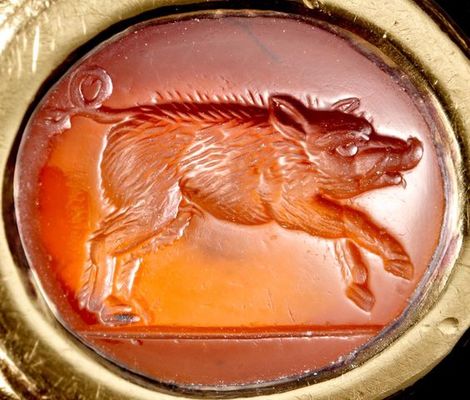






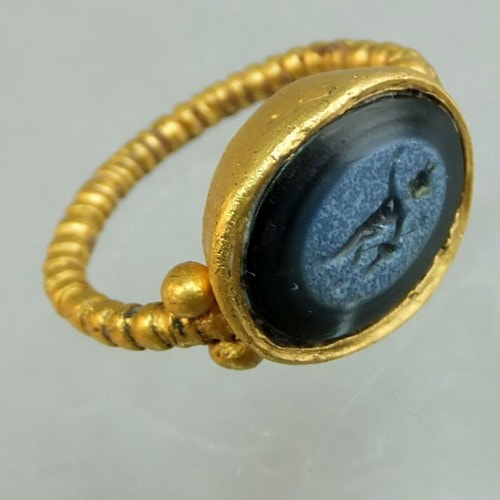




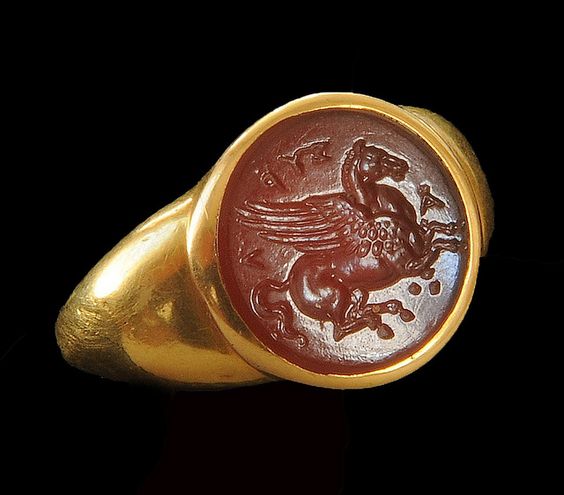


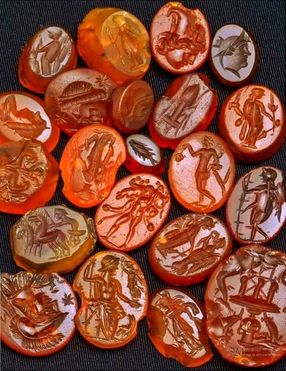

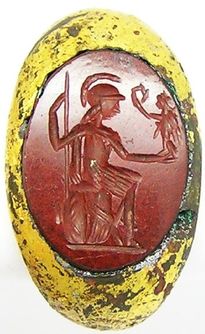






 RSS Feed
RSS Feed
